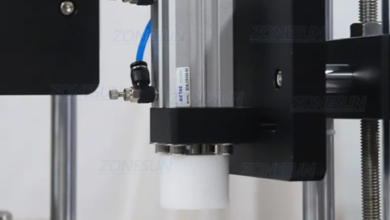
Understanding the Role of Metal Forming Tools
Introduction
Metal fabrication relies heavily on precision and consistency to produce high-quality components. Among the critical tools in this field are the brake press dies, which shape and bend sheet metal accurately. A thorough understanding of these dies, their types, proper use, and maintenance can significantly enhance productivity and ensure safety in any workshop or manufacturing environment.
Function of Dies in Metal Bending
Brake press dies are installed on press brake machines and work in tandem with the punch to bend sheet metal into the desired shape. The die serves as the lower part of the tooling, providing the necessary resistance and form while the punch applies pressure from above.
The correct selection of dies ensures that bends are precise, angles are consistent, and the finished product meets design specifications. Improper dies, on the other hand, can cause material cracking, misalignment, or excessive wear on the machine.
See also: Precision and Comfort in Modern Technology
Common Types of Brake Press Dies
Several types of brake press dies exist to handle different bending operations. Choosing the right die depends on material thickness, bend angle, and production requirements.
V-Dies
V-dies are versatile and suitable for general bending applications. The width of the V opening is typically eight times the material thickness for standard air bending operations.
U-Dies
U-dies provide a rounded bend and are ideal for smoother curves rather than sharp angles. They are used in applications where a more gentle bend is required.
Acute Angle Dies
These dies allow for bends sharper than 90 degrees, providing the precision needed for specific design requirements.
Gooseneck Dies
Gooseneck dies have a curved profile brake press dies that allows bends with complex geometries without interference. They are particularly useful for bends with return flanges or other obstructions.
Hemming Dies
Hemming dies are designed to fold sheet metal edges flat, commonly used in automotive panels and other applications where smooth, safe edges are necessary.
Offset Dies
Offset dies create Z-shaped bends in a single stroke, improving efficiency by reducing the need for multiple tooling setups.
Radius Dies
Radius dies produce bends with a larger radius, reducing the risk of material cracking, especially in thick or brittle metals.
Material Considerations for Dies
The material used to manufacture brake press dies affects their durability and performance. Tool steels are commonly used due to their wear resistance, toughness, and ability to withstand repeated bending cycles.
Options include:
- Standard tool steel for general-purpose operations.
- Hardened steel for high-volume production.
- Carbide-tipped or coated dies for precision bending and increased longevity.
Surface treatments, such as nitriding or coating, can further improve resistance to wear and reduce friction during bending.
Selecting the Right Die
Selecting the correct die involves considering several factors:
- Material Type and Thickness – Thicker metals require wider and stronger dies.
- Bend Radius – Determines the die profile and punch tip.
- Press Brake Capacity – Ensure the tonnage of the machine accommodates the selected die.
- Complexity of Part – Intricate parts may need specialized or segmented dies.
- Production Volume – High-volume production benefits from durable and quick-change dies.
Using tonnage charts and bend allowance formulas helps operators determine the proper die configuration for each job.
Importance of Proper Alignment
Even the highest quality die will produce poor results if it is misaligned. Correct alignment ensures uniform pressure along the bend line, resulting in consistent angles and a high-quality finish. Misalignment can lead to uneven bends, increased wear, and potential damage to both tools and material.
Regular inspections and precise calibration, sometimes assisted by laser alignment tools, are necessary to maintain accuracy.
Die Maintenance Practices
Proper maintenance prolongs the life of brake press dies and ensures consistent performance. Key practices include:
- Cleaning after each use to remove metal debris and residues.
- Inspecting for cracks, chips, or edge wear before operation.
- Applying protective coatings to prevent rust.
- Storing dies in organized racks or dedicated storage solutions to avoid accidental damage.
A well-maintained die contributes to safer operations and reduces the likelihood of defects in the finished product.
Safety Considerations
Handling brake press dies involves heavy equipment and significant force, making safety a top priority. Key precautions include:
- Using mechanical aids or lifting devices for heavy dies.
- Wearing protective gloves and footwear.
- Ensuring the press brake is powered off during installation or removal.
- Securing the die properly before starting the machine.
Following these precautions minimizes the risk of injury and helps maintain tool integrity.
Advancements in Die Technology
Modern manufacturing demands precision, speed, and flexibility. Advances in brake press die technology include:
- Quick-change systems that reduce setup time.
- Segmented or modular dies for complex shapes and small batch production.
- Precision-ground dies that ensure high repeatability.
- Laser-calibrated alignment systems for optimal positioning and accuracy.
These innovations enhance productivity and reduce downtime while maintaining consistent bending quality.
Applications Across Industries
Brake press dies are used in a variety of industries, including:
- Automotive: Bending panels, chassis components, and brackets.
- Aerospace: Producing precise parts with tight tolerances.
- Construction: Fabricating structural and decorative metal components.
- HVAC: Forming ducts, enclosures, and fittings.
Each industry has specific requirements, and the selection of dies must accommodate the material, thickness, and design of the final product.
Conclusion
Brake press dies are essential for achieving precision, efficiency, and safety in metal bending operations. Proper selection, alignment, and maintenance are crucial to ensure consistent results and extend the lifespan of both the dies and the press brake machine.
Modern innovations, including quick-change systems, modular dies, and laser alignment, have made operations faster, more accurate, and more flexible. A thorough understanding of these tools enables manufacturers to optimize workflows, reduce material waste, and maintain a high standard of quality across diverse applications.
Investing in high-quality brake press dies and maintaining them diligently is a key factor in achieving superior performance and reliability in metal fabrication processes.




